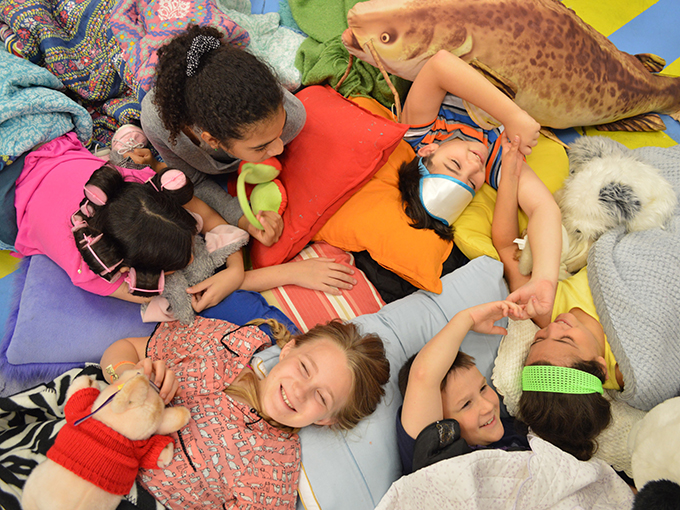It’s a well-known fact that YouTube is a treasure trove of niche content. Kids thrive on finding shows and clips that aren’t on traditional TV, and digital content creators are happy to oblige. Which is why Oscar-winning director Peggy Stern and her partner Lisa Judson have turned to the video-sharing platform to launch Super d! Show, which focuses on learning disabilities.
“It’s not really that small of a niche. Learning disabilities affect one in five kids. So that’s a large percentage of our population, and that’s when I started realizing that this was going to be a bigger deal,” says Stern, who is dyslexic.
The statistics on how many children actually have a learning disability vary greatly, with some studies citing stats as small as 3.2%, much lower than the percentage to which Stern refers. However, most statistics note that learning disabilities are the most prevalent handicap among children, and that they have increased largely year over year. In Canada, for example, the number of children with learning disabilities increased by 40% between 2001 and 2006.
Created by New York-based Dyslexiaville, Super d! Show takes on the concept of a typical kids clubhouse, but the cast is made up of 15 kids ages seven to 12 who have different learning disabilities. The series isn’t teaching kids how to read, rather it’s delving into issues like anxiety and bullying–and how those problems might come about if you have a learning disability.
“The issues that we talk about are universal, so we’re finding in our testing that even kids who do not have learning differences can relate to embarrassment, bullying and struggling with school work,” says Judson.
There are 17 x six-minute episodes in Super d! Show’s pilot season, eight of which are online now (with some bonus videos). Since launching in October, the series has received 11,000 views. The creators note the show reached that number without any marketing, and anticipate viewership numbers to grow once they test and debut a new interactive website in 2017, as well as upload the rest of the show’s first season. The website will take videos from the series and prompt kids to complete activities using drawings, voice recordings and other interactive tools. The videos incorporate struggles with dyslexia, but also issues faced by kids who fit under the spectrum of having a learning disability.
“There might be a kid who is feeling embarrassed that she has to explain at school why she leaves the regular classroom to go to the resource room to get special help, or there might be another situation where a kid who has ADHD is talking about procrastinating,” says Stern. “We have one episode that’s a cooking show competition, where the dyslexic child is given a recipe, tries to read it, turns it over and throws it over their shoulder, and then goes on to win because she uses her creativity and thinks outside of the box, which is a strength that a lot of kids with learning differences actually have.”
It was Stern’s own connections to learning disabilities that really propelled the show into existence. She says she was lucky to be diagnosed as a child in the 1960s, and it only happened because of a family member who was in the field. Her daughter is also dyslexic (it often runs in families). This enabled her to have a perspective both as a child and parent, which was imperative to the show.
“I didn’t want to go and do a documentary or something that other people had already touched on, even if it has my own personal bent. I really tried to research the field,” says Stern. “What was absolutely missing was anything for young kids who were being diagnosed or who weren’t sure yet what they had but were beginning to fall behind in school, or who were dealing with having a learning difference. I understood that acutely.”
Stern and Judson also plan on launching a line of posters and stickers in the hopes of normalizing learning disabilities.
“These kids out there who are finding out that they’re going to need to be in a resource room or need to be tutored need to feel good about themselves as they go through the process, because it’s really easy for them to start to feel stupid or bad about themselves,” says Stern. “So if you started having Super d! stickers on your notebook maybe it would start to be cool to be one of those kids.”
Although Stern has Hollywood clout due to her 2005 Academy Award for her documentary The Moon and the Son: An Imagined Conversation, she has decided to stay away from the big studios for now.
“I really wanted the show to be something that could be put out there and get immediate feedback. This allows us to make sure we’ve hit the right tone and that these are resonating with kids, as well as with the educators and parents,” says Stern.
But Stern and Judson are leaving the door open to potentially working with a studio down the road. They wanted to put up the entire first season, gain viewers and then take that to broadcasters as proof that this isn’t a niche topic, and that a larger audience with learning disabilities, like dyslexia, exists.

























